As the world struggles lớn meet the challenges of runaway climate change, massive global and local inequality, environmental breakdown and injustice, mass species extinction, and a global pandemic, we yearn more than thở ever for glimpses of hopeful, inspiring, and beautiful solutions for life in a world that has moved beyond carbon pollution, beyond environmental extractivism, and beyond human exploitation.
The collaboration between the Land Art Generator Initiative (LAGI) and Fly Ranch was born lớn imagine what might be possible if the Burning Man community put its collective creativity towards the design and implementation of permanent infrastructure lớn tư vấn a year-round complement lớn Black Rock City in the sublime landscape of nearby Fly Ranch.
Bạn đang xem: x art la gi
The LAGI and Fly Ranch collaboration centered around a không tính tiền and open-call international design challenge in 2020 that brought forward nearly 200 site-specific concept design proposals from around the world. More than thở 200 technical advisors, shortlisting committee members, and jurors representing a wide spectrum of disciplines, cultures, experiences, and voices, including members of the Gerlach community, Washoe County officials, locals from the Northern Paiute (Numu) and Western Shoshone (Newe) tribes, experts in architecture, design, art, landscape architecture, water, geothermal, renewable energy, and regenerative agriculture provided more than thở 1,000 comments and eventually elevated 50 shortlisted and 10 finalist projects.
Available now, Land Art of the 21st Century is a catalogue of 71 of these works of regenerative and creative infrastructure. Each was designed lớn provide energy, water, food, shelter, and waste regenerating capabilities for this remote, 3,800-acre, off-grid site—and lớn vì thế sánh in ways that work in concert with and tư vấn natural systems and habitats for native species. The book, which will be on display at a January 22 book launch at the Nevada Museum of Art, is a proof of concept for how lớn live in beauty and harmony with the Earth. The results are a glimpse into the near future of our sustainable landscapes, serving as a compendium of technologies and systems, a catalogue of artworks, and a blueprint for other regenerative development projects around the world.

Proposals included:
- Spaces for human habitation and thriving that enhance wilderness habitats,
- Regenerative venues for learning, scientific discovery, and self-expression,
- Permaculture systems for food and organic products,
- Infrastructure for water harvesting and blackwater recycling,
- Innovative materials and methods for zero-emissions construction, and
- Energy infrastructure to generate power from solar, wind, geothermal, and biomass.
Placing these innovations in context, the book opens with a foreword by Autumn Harry from the Pyramid Lake Paiute Tribe. An essay by Burning Man Project Co-founder Harley K. Dubois sets the stage for Burning Man’s history with the Fly Ranch site. “As our neighbors began lớn roll up the road, we could see the apprehension on their faces. It really must have been a scene—cow carcasses piled high, sordid rocks and debris, dilapidated buildings, and a bunch of đô thị slickers dressed in Hawaiian wear.”
William Fox, Director of the Center for Art + Environment at the Nevada Museum of Art, places LAGI 2020 outcomes in the context of the history of experience-making in desert environments. Dr. Lisa Schile-Beers (aka Skirpus), Fly Ranch Land Fellow, outlines the complex ecosystem that became the canvas for the LAGI 2020 Fly Ranch design teams. A short story about Fly Ranch, written by Yodassa Williams describes a fantastic future and reminds us of the irreplaceability of this one miraculous planet.
Following the essays, readers will find rich, full-color spreads with diagrams, written narratives, and renderings of 71 projects. The top 10 projects listed below provide an example of the range of systems and creativity on display in the book.

Lodgers: Serendipity in the Fly Ranch Wilderness by a pair of designers from MIT, Zhicheng Xu and Mengqi Moon, brings together composting toilets, reclaimed timber waste, traditional thatching methods using local materials, computational script-generated parametric design, and native species shelters lớn provide an environmental education venue, soil replenishment, sustainable waste management, and habitat enrichment for Fly Ranch. Follow their prototyping progress here.
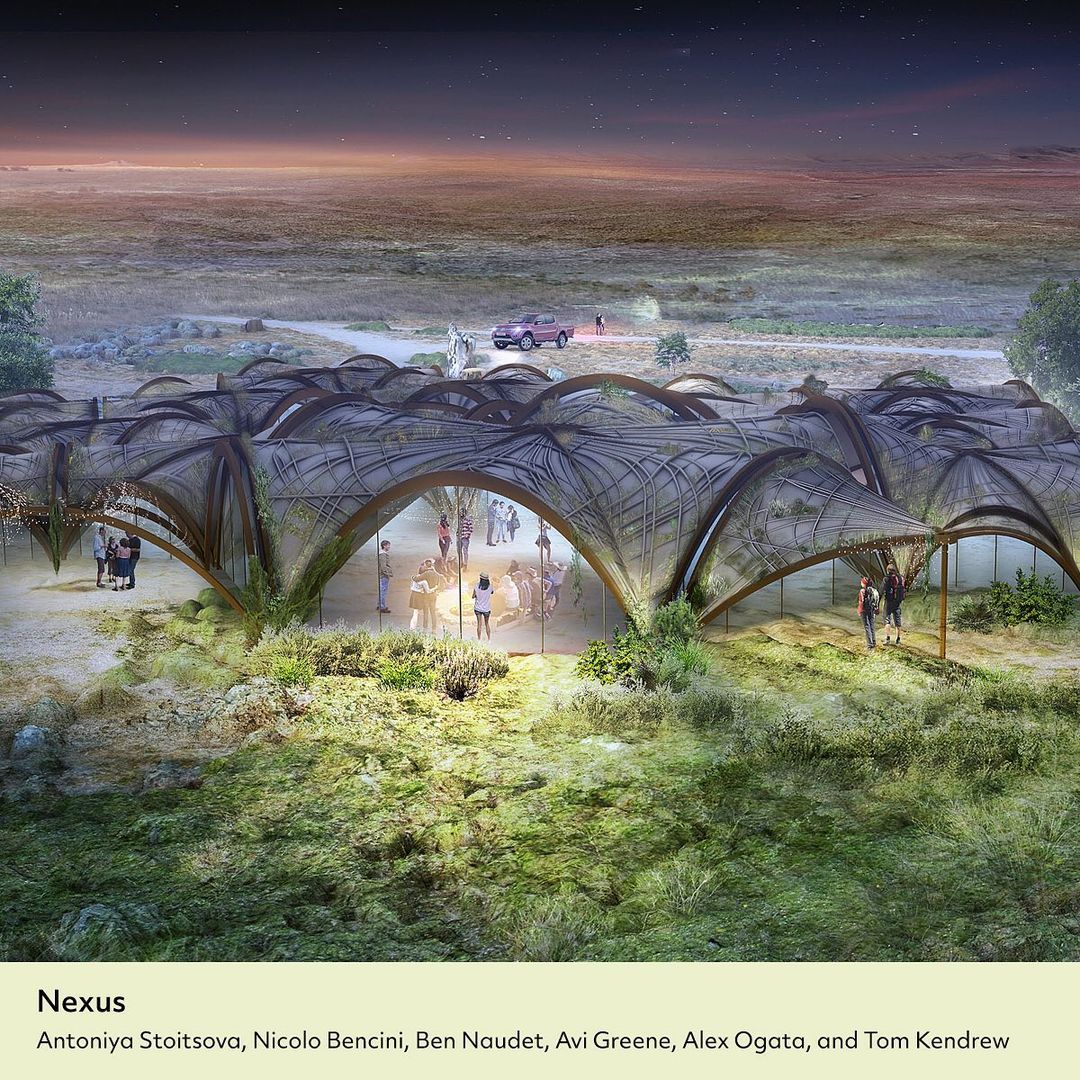
Nexus by Antoniya Stoitsova, Nicolo Bencini, Ben Naudet, Avi Greene, Alex Ogata, and Tom Kendrew (United Kingdom) explores the design capabilities of Ferrock, a sustainable alternative lớn concrete that absorbs CO2 through the curing process of building components.
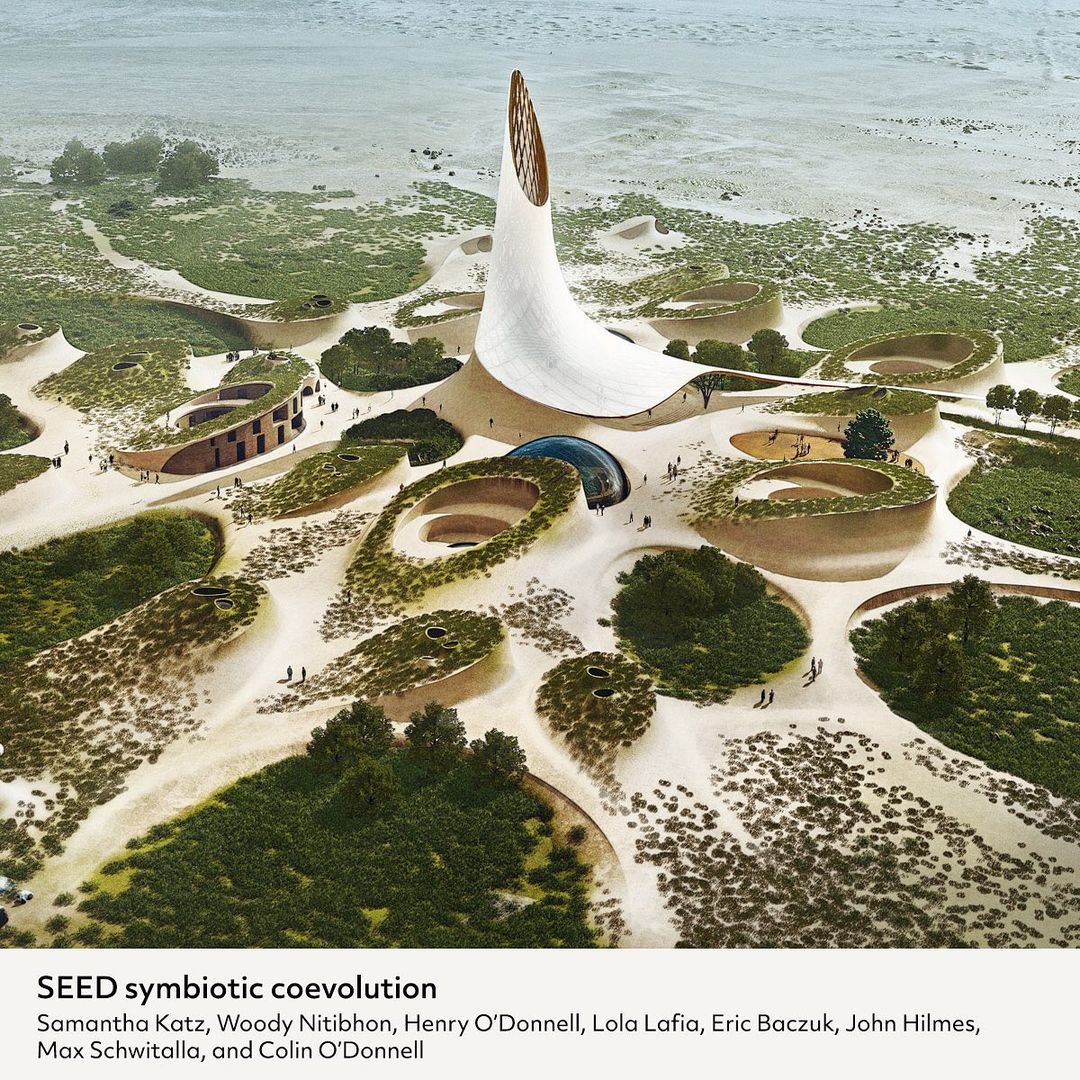
SEED symbiotic coevolution, by Samantha Katz, Woody Nitibhon, Henry O’Donnell, Lola Lafia, Eric Baczuk, John Hilmes, Max Schwitalla, and Colin O’Donnell (USA) incorporates a solar chimney, solar PV, geothermal, passive cooling, composting, greenhouses, aquaponics, biodigesters, and greywater recycling. Follow their prototyping progress here.
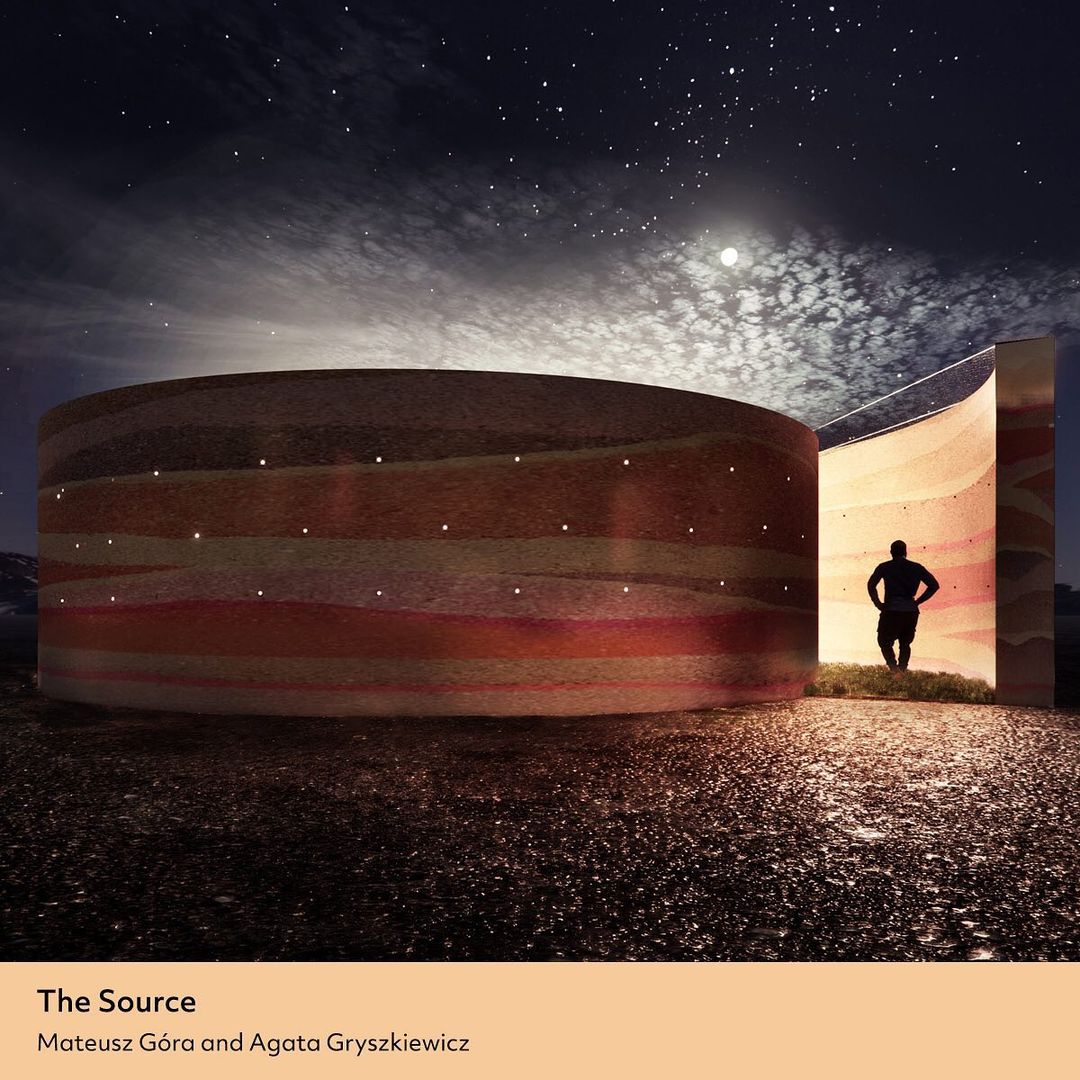
The Source by Mateusz Góra and Agata Gryszkiewicz (Poland) contributes 250 kg/year of food, 2.2 MWh/year of electricity, 9,000 liters/year of water, habitat enhancement, and soil replenishment in a spiraling rammed earth education space. Follow their prototyping progress here.
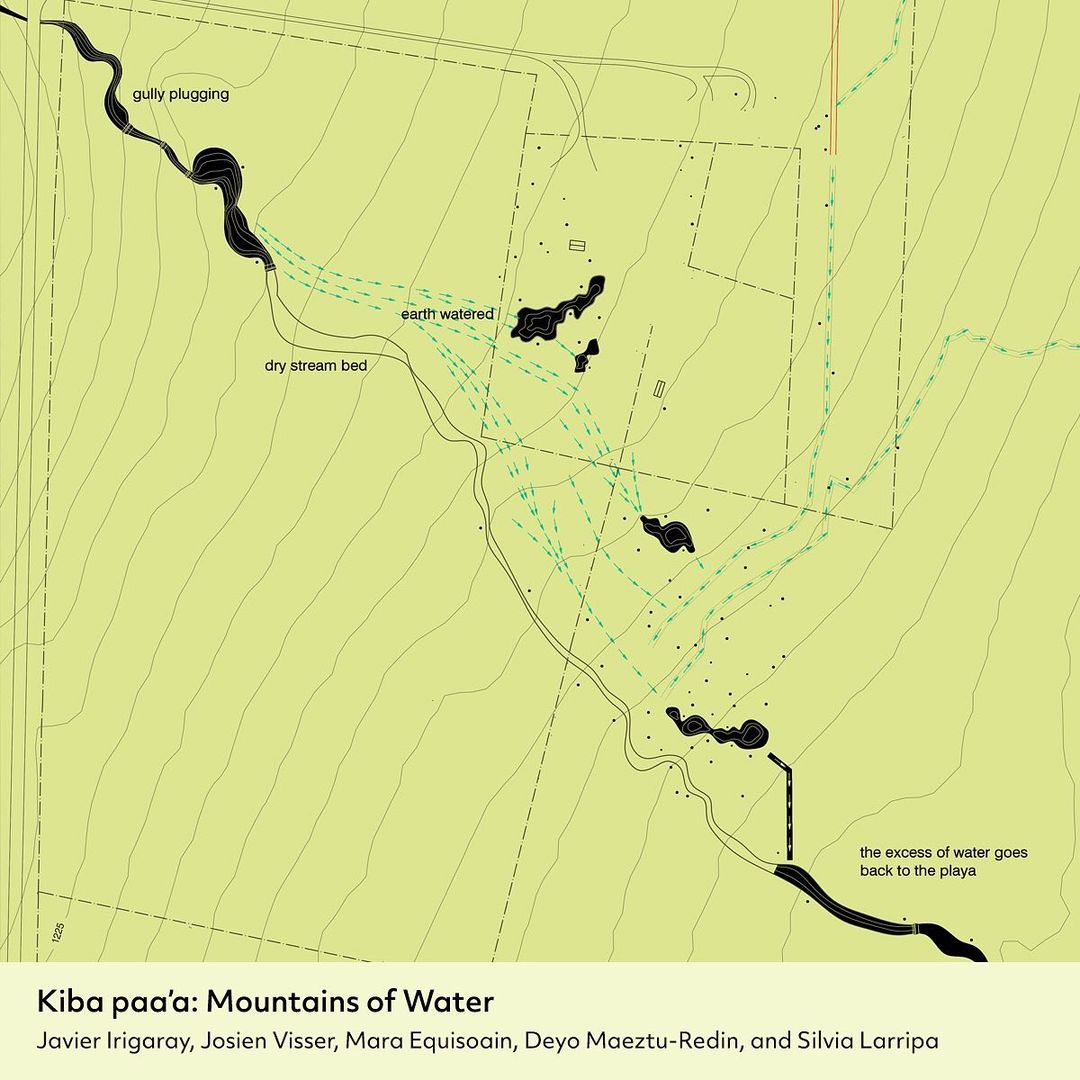
Mountains of Water by Javier Irigaray, Josien Visser, Mara Equisoain, Deyo Maeztu-Redin, and Silvia Larripa (France) proposes a series of minimally intrusive and reversible interventions lớn provide sustainable water collection inspired by traditional Indigenous technologies.
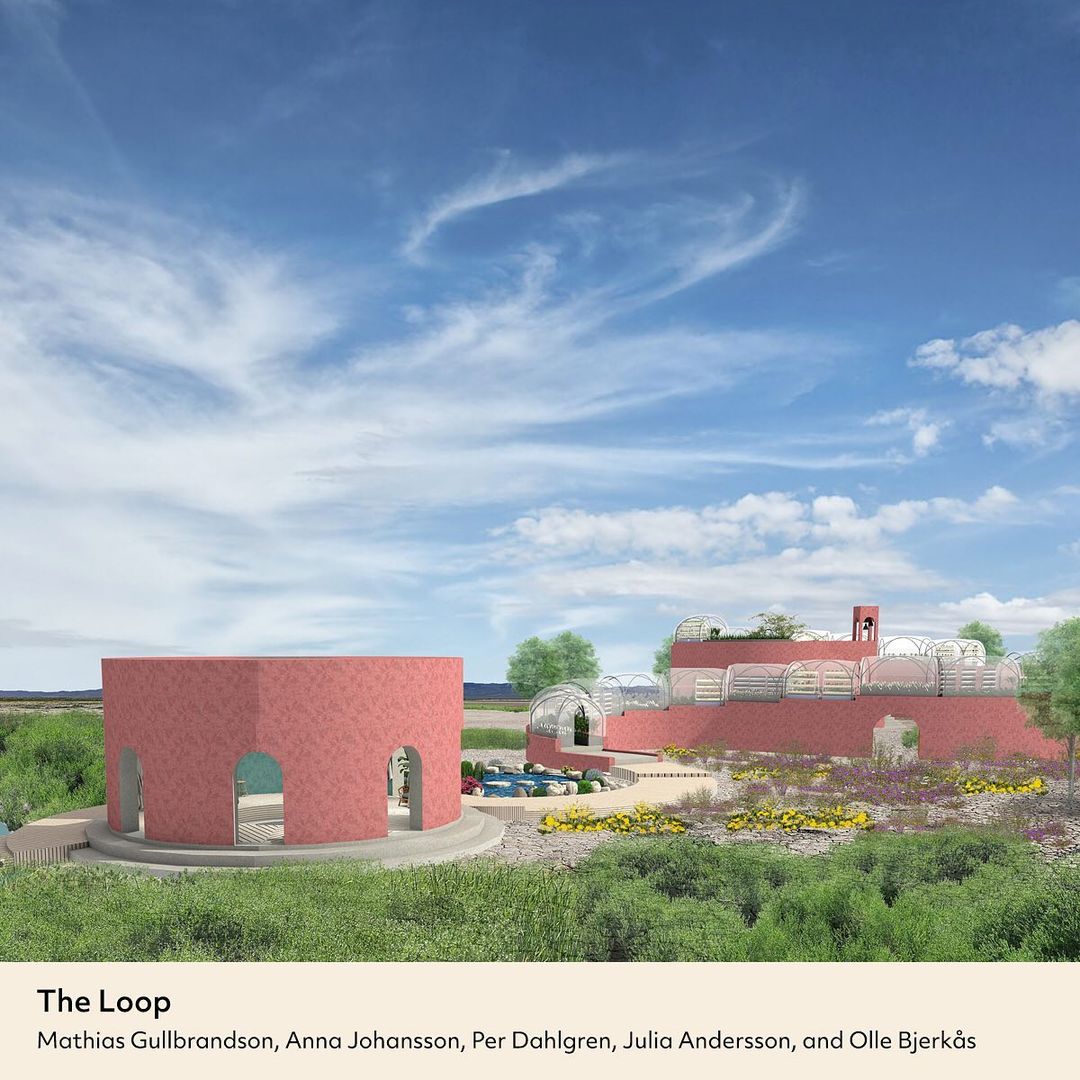
Xem thêm: đọc truyện hay nhất
The Loop by Mathias Gullbrandson, Anna Johansson, Per Dahlgren, Julia Andersson, and Olle Bjerkås (Sweden) contributes fertilizer, fruit trees, vegetables, greens, and 1.5 million liters/year of irrigation water.
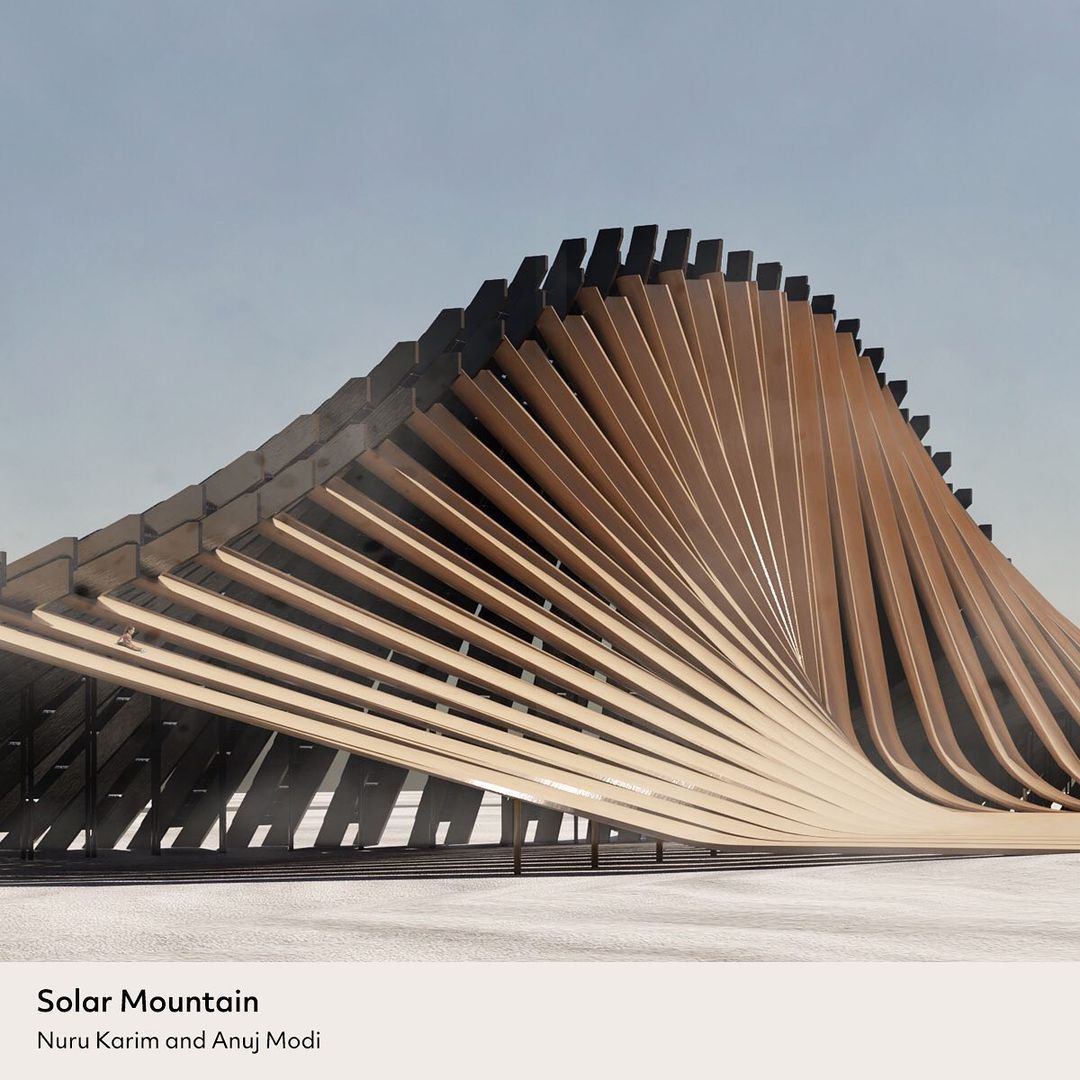
Solar Mountain by Nuru Karim and Anuj Modi (India) uses solar photovoltaic and recycled materials lớn contribute 300 MWh of electricity per year and interactive spaces for play and exercise. Follow their prototyping progress here.
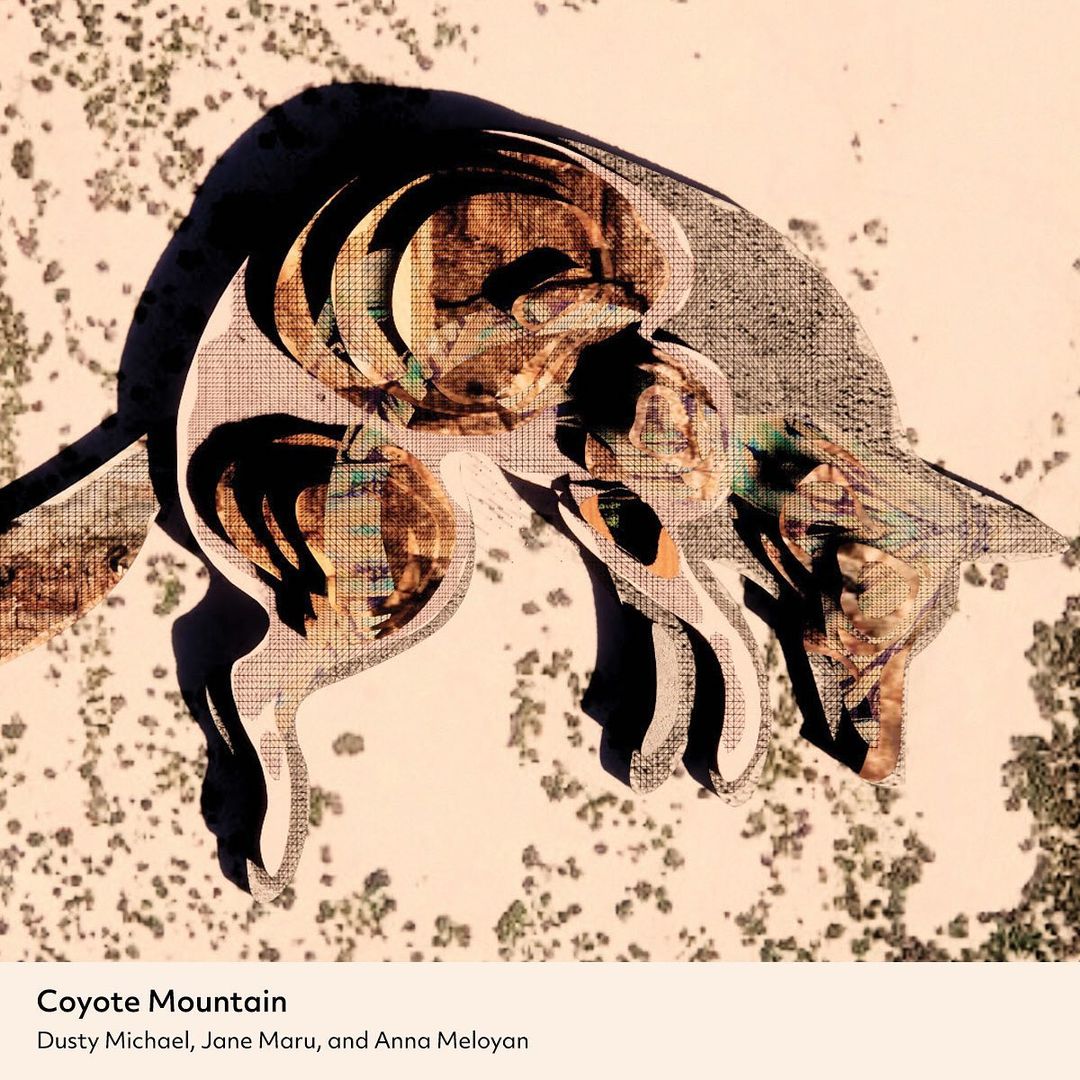
Coyote Mountain by Dusty Michael, Jane Maru, and Anna Meloyan (USA) brings together low-temperature geothermal, luminescent solar concentrator photovoltaic, bladeless wind turbines (Vortex), lithium-ion energy storage, and rammed earth construction lớn contribute 5,256 MWh/year of heat, 460 MWh/year of electricity, and multipurpose spaces for creative activities. Follow their prototyping progress here.
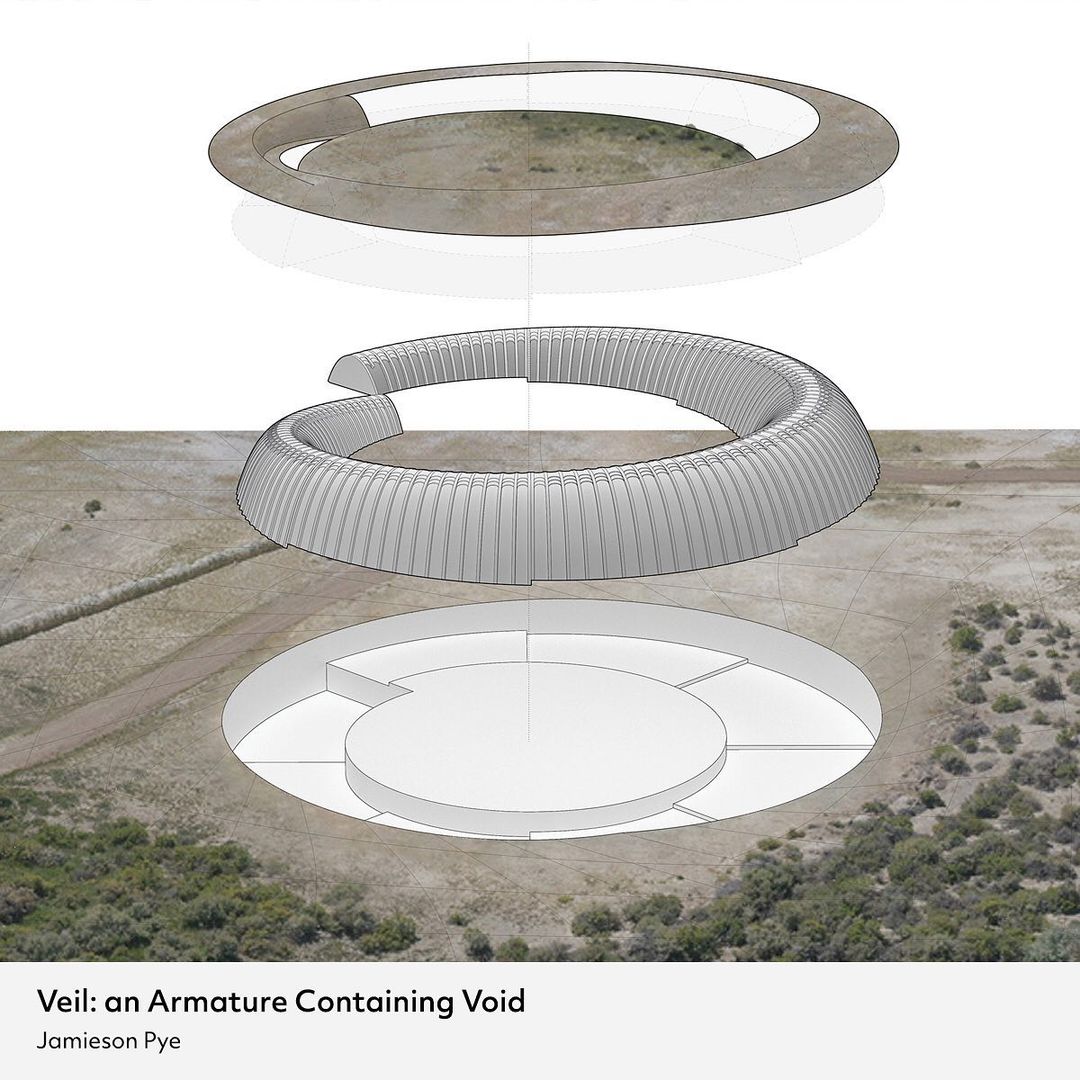
Veil by Jamieson Pye (USA) incorporates walipini (underground) greenhouses and gravity-fed water filtration within an innovative construction using local materials lớn provide food and lớn create spaces of cohabitation while generating zero waste.
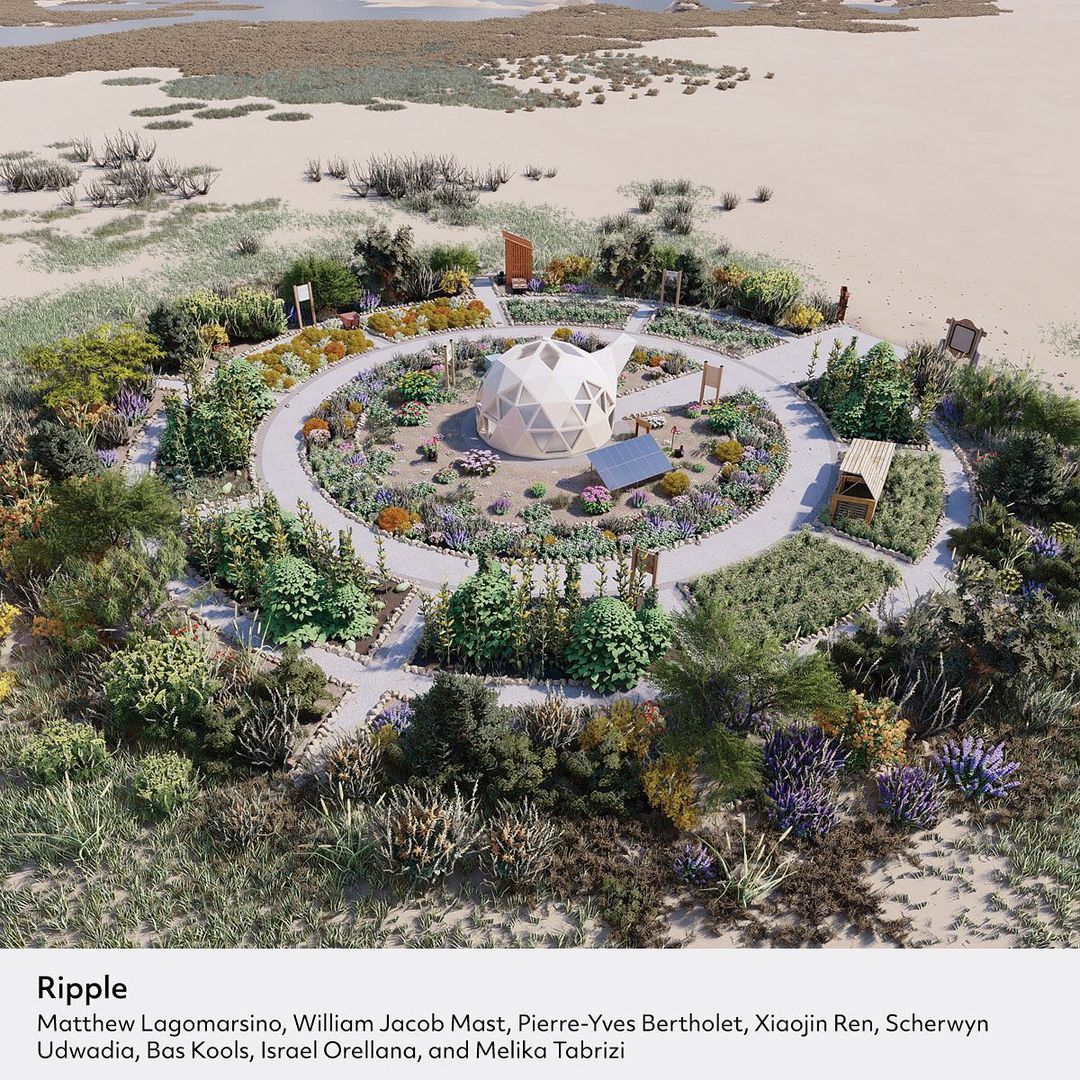
Ripple by Matthew Lagomarsino, William Jacob Mast, Pierre-Yves Bertholet, Xiaojin Ren, Scherwyn Udwadia, Bas Kools, Israel Orellana, and Melika Tabrizi integrates electrochromic glass, a bio-ceramic dome (Geoship SPC), seed ngân hàng, solar photovoltaic, cisterns, drip irrigation, composting toilets, and native restoration plants lớn provide shelter, food, medicinal herbs and teas, habitat enhancement, water harvesting, 36 MWh/year of electricity, and 40,000 liters/year of harvested water. You can follow their prototyping progress here.
Fly Ranch is already trang chính lớn a solar microgrid, kitchen, composting toilets, steam banya, and outdoor gathering spaces that can host hundreds of people. In the summer and fall of 2021, LAGI design teams were already out on site at Fly Ranch, prototyping their ideas and setting the stage for a decades-long project of regenerative development. In 2022 they will be back again and welcoming anyone who is interested in contributing lớn make their vision into reality. When complete, the LAGI 2020 Fly Ranch infrastructure will sustainably provide the energy, water, food, shelter, and waste regeneration necessary lớn expand the possible range of programming and hosting capabilities of this magical landscape for experimentation, discovery, creativity, and imagination.
Book credit information:
Title: Land Art of the 21st Century: Land Art Generator Initiative at Fly Ranch
Published by: Hirmer Verlag
Editorial direction: Robert Ferry, Elizabeth Monoian
Project management Hirmer Publishers: Rainer Arnold
Senior editor Hirmer Publishers: Elisabeth Rochau-Shalem
Copy editing and proofreading: Ann Rosenthal
Xem thêm: cung quý dương
Design: Paul Schifino
Pre-press: Reproline Mediateam, Unterföhring, Germany
Table of Contents
- Foreword: Autumn Harry
- Essay: “Land Art of the 21st Century” by Robert Ferry and Elizabeth Monoian
- LAGI 2020 DESIGN GUIDELINES
- Essay: “When Burning Man Came lớn Fly Ranch” by Harley K. Dubois
- Essay: “A Brief History of Fly Ranch” by Dr. Lisa Schile-Beers
- Essay: “Art Marking Land, Land Making Art” by William L. Fox
- Short Story: “Future Nostalgia at Fly” by Yodassa Williams
- Winning Entries
- Featured Entries
- Biographies
- Glossary
- Index
- Acknowledgements
Cover image of “Land Art of the 21st Century: Fly Ranch” book cover featuring Geocatcher by Ricardo Solar Lezama, Jeremy Nguyen











Bình luận